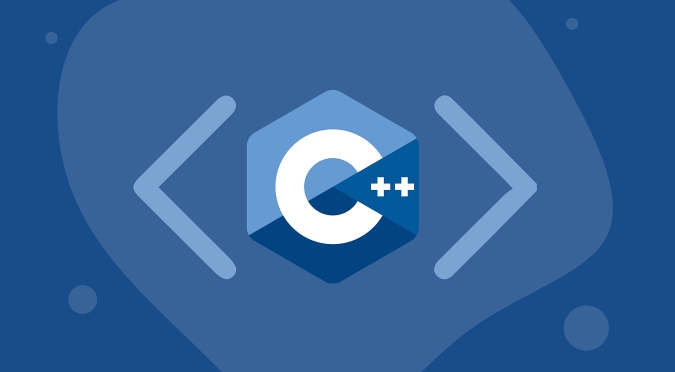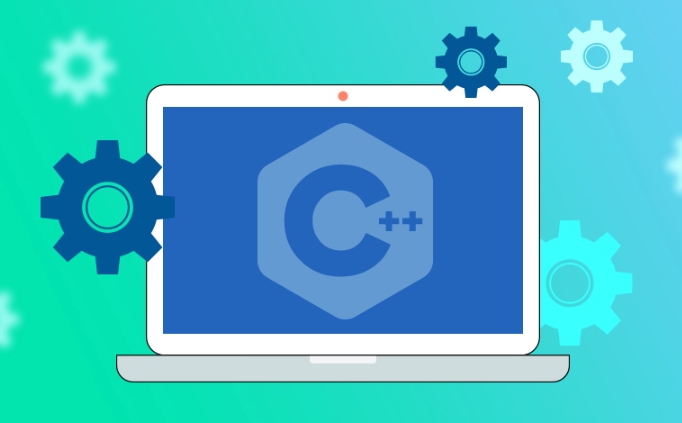How to make an HTTP GET request with libcurl in C
Jul 26, 2025 am 02:08 AMTo initiate an HTTP GET request in C using libcurl, you must first install and link the libcurl library, and then follow the following steps: 1. Call curl_easy_init() to initialize the CURL session; 2. Use curl_easy_setopt to set the target URL (CURLOPT_URL), callback function (CURLOPT_WRITEFUNCTION) and data pointer (CURLOPT_WRITEDATA) to capture the response; 3. Optional settings such as follow redirection (CURLOPT_FOLLOWLOCATION) and timeout (CURLOPT_TIMEOUT); 4. Call curl_easy_perform() to execute the request and check whether the return value is successful; 5. Use std::string to store response data and process it through callback function; 6. Finally, curl_easy_cleanup() is called to free up resources to avoid memory leaks. Although this method is more complex than Python's requests library, it is efficient and widely used in C projects. After completing the above steps, you can correctly send GET requests and get the response content.

To make an HTTP GET request using libcurl in C , you need to initialize a CURL session, set the necessary options (like the URL), and perform the request. Here's a clear, practical guide to get it working.

? Basic Setup
First, make sure you have libcurl installed and linked to your project. On Ubuntu/Debian:
sudo apt-get install libcurl4-openssl-dev
When compiling, link with -lcurl :

g your_file.cpp -o your_program -lcurl
? Step-by-Step Code Example
#include <iostream>
#include <string>
#include <curl/curl.h>
// Callback function to handle data received from curl
size_t WriteCallback(void* contents, size_t size, size_t nmemb, std::string* response) {
size_t totalSize = size * nmemb;
response->append((char*)contents, totalSize);
return totalSize;
}
int main() {
// Initialize curl
CURL* curl = curl_easy_init();
std::string response_data;
if (curl) {
// Set the URL for the GET request
curl_easy_setopt(curl, CURLOPT_URL, "https://httpbin.org/get");
// Set the callback function to capture the response
curl_easy_setopt(curl, CURLOPT_WRITEFUNCTION, WriteCallback);
curl_easy_setopt(curl, CURLOPT_WRITEDATA, &response_data);
// Optional: follow redirects
curl_easy_setopt(curl, CURLOPT_FOLLOWLOCATION, 1L);
// Optional: set timeout
curl_easy_setopt(curl, CURLOPT_TIMEOUT, 10L);
// Perform the request
CURLcode res = curl_easy_perform(curl);
// Check for errors
if (res != CURLE_OK) {
std::cerr << "curl_easy_perform() failed: " << curl_easy_strerror(res) << std::endl;
} else {
// Print the response
std::cout << "Response:\n" << response_data << std::endl;
}
// Clean up
curl_easy_cleanup(curl);
} else {
std::cerr << "Failed to initialize curl" << std::endl;
}
return 0;
}? Key Points Explained
-
curl_easy_init()– Starts a libcurl session. -
CURLOPT_URL– Sets the target URL. -
CURLOPT_WRITEFUNCTION– Specifies a function to handle incoming data. -
CURLOPT_WRITEDATA– Passes your variable (response_data) to the callback. -
curl_easy_perform()– Executes the request synchronously. - Always call
curl_easy_cleanup()to avoid memory leaks.
? Tips
- The callback function must match the expected signature (
size_t (*)(void*, size_t, size_t, void*)). - You can use this same pattern for JSON APIs – just parse the response with a JSON library like
nlohmann/json. - For HTTPS, ensure you have SSL support enabled in your libcurl build (usually default).
- If you're getting certificate errors, you can (temporarily for testing) add:
curl_easy_setopt(curl, CURLOPT_SSL_VERIFYPEER, 0L);
?? But never do this in production.
? Summary
Making a GET request with libcurl in C involves:

- Initializing curl
- Setting options (URL, callback)
- Performing the request
- Handling the response and cleaning up
It's not as simple as Python's
requests.get(), but it's efficient and widely used in C applications.Basically just set up the callback, tell curl where to go, and read the result.
The above is the detailed content of How to make an HTTP GET request with libcurl in C. For more information, please follow other related articles on the PHP Chinese website!

Hot AI Tools

Undress AI Tool
Undress images for free

Undresser.AI Undress
AI-powered app for creating realistic nude photos

AI Clothes Remover
Online AI tool for removing clothes from photos.

Clothoff.io
AI clothes remover

Video Face Swap
Swap faces in any video effortlessly with our completely free AI face swap tool!

Hot Article

Hot Tools

Notepad++7.3.1
Easy-to-use and free code editor

SublimeText3 Chinese version
Chinese version, very easy to use

Zend Studio 13.0.1
Powerful PHP integrated development environment

Dreamweaver CS6
Visual web development tools

SublimeText3 Mac version
God-level code editing software (SublimeText3)

Hot Topics
 C tutorial on the Standard Template Library (STL)
Jul 02, 2025 am 01:26 AM
C tutorial on the Standard Template Library (STL)
Jul 02, 2025 am 01:26 AM
STL (Standard Template Library) is an important part of the C standard library, including three core components: container, iterator and algorithm. 1. Containers such as vector, map, and set are used to store data; 2. Iterators are used to access container elements; 3. Algorithms such as sort and find are used to operate data. When selecting a container, vector is suitable for dynamic arrays, list is suitable for frequent insertion and deletion, deque supports double-ended quick operation, map/unordered_map is used for key-value pair search, and set/unordered_set is used for deduplication. When using the algorithm, the header file should be included, and iterators and lambda expressions should be combined. Be careful to avoid failure iterators, update iterators when deleting, and not modify m
 How to use cin and cout for input/output in C ?
Jul 02, 2025 am 01:10 AM
How to use cin and cout for input/output in C ?
Jul 02, 2025 am 01:10 AM
In C, cin and cout are used for console input and output. 1. Use cout to read the input, pay attention to type matching problems, and stop encountering spaces; 3. Use getline(cin, str) when reading strings containing spaces; 4. When using cin and getline, you need to clean the remaining characters in the buffer; 5. When entering incorrectly, you need to call cin.clear() and cin.ignore() to deal with exception status. Master these key points and write stable console programs.
 C tutorial for graphics programming with OpenGL
Jul 02, 2025 am 12:07 AM
C tutorial for graphics programming with OpenGL
Jul 02, 2025 am 12:07 AM
As a beginner graphical programming for C programmers, OpenGL is a good choice. First, you need to build a development environment, use GLFW or SDL to create a window, load the function pointer with GLEW or glad, and correctly set the context version such as 3.3. Secondly, understand OpenGL's state machine model and master the core drawing process: create and compile shaders, link programs, upload vertex data (VBO), configure attribute pointers (VAO) and call drawing functions. In addition, you must be familiar with debugging techniques, check the shader compilation and program link status, enable the vertex attribute array, set the screen clear color, etc. Recommended learning resources include LearnOpenGL, OpenGLRedBook and YouTube tutorial series. Master the above
 C tutorial for competitive programming
Jul 02, 2025 am 12:54 AM
C tutorial for competitive programming
Jul 02, 2025 am 12:54 AM
Learn C You should start from the following points when playing games: 1. Proficient in basic grammar but do not need to go deep into it, master the basic contents of variable definition, looping, condition judgment, functions, etc.; 2. Focus on mastering the use of STL containers such as vector, map, set, queue, and stack; 3. Learn fast input and output techniques, such as closing synchronous streams or using scanf and printf; 4. Use templates and macros to simplify code writing and improve efficiency; 5. Familiar with common details such as boundary conditions and initialization errors.
 Using std::chrono in C
Jul 15, 2025 am 01:30 AM
Using std::chrono in C
Jul 15, 2025 am 01:30 AM
std::chrono is used in C to process time, including obtaining the current time, measuring execution time, operation time point and duration, and formatting analysis time. 1. Use std::chrono::system_clock::now() to obtain the current time, which can be converted into a readable string, but the system clock may not be monotonous; 2. Use std::chrono::steady_clock to measure the execution time to ensure monotony, and convert it into milliseconds, seconds and other units through duration_cast; 3. Time point (time_point) and duration (duration) can be interoperable, but attention should be paid to unit compatibility and clock epoch (epoch)
 What is the volatile keyword in C ?
Jul 04, 2025 am 01:09 AM
What is the volatile keyword in C ?
Jul 04, 2025 am 01:09 AM
volatile tells the compiler that the value of the variable may change at any time, preventing the compiler from optimizing access. 1. Used for hardware registers, signal handlers, or shared variables between threads (but modern C recommends std::atomic). 2. Each access is directly read and write memory instead of cached to registers. 3. It does not provide atomicity or thread safety, and only ensures that the compiler does not optimize read and write. 4. Constantly, the two are sometimes used in combination to represent read-only but externally modifyable variables. 5. It cannot replace mutexes or atomic operations, and excessive use will affect performance.
 How to get a stack trace in C ?
Jul 07, 2025 am 01:41 AM
How to get a stack trace in C ?
Jul 07, 2025 am 01:41 AM
There are mainly the following methods to obtain stack traces in C: 1. Use backtrace and backtrace_symbols functions on Linux platform. By including obtaining the call stack and printing symbol information, the -rdynamic parameter needs to be added when compiling; 2. Use CaptureStackBackTrace function on Windows platform, and you need to link DbgHelp.lib and rely on PDB file to parse the function name; 3. Use third-party libraries such as GoogleBreakpad or Boost.Stacktrace to cross-platform and simplify stack capture operations; 4. In exception handling, combine the above methods to automatically output stack information in catch blocks
 How to start learning C in 2024?
Jul 02, 2025 am 01:17 AM
How to start learning C in 2024?
Jul 02, 2025 am 01:17 AM
The key to learning C lies in the methods and rhythm. Learning C in 2024 has rich resources and tools to support. 1. Prepare the development environment: It is recommended to use tools such as VisualStudio, CLion or Xcode, or try online compilers to practice; there is no need to worry about advanced functions in the early stage, just complete "HelloWorld" first. 2. The learning content starts with basic grammar, gradually penetrates into core content such as pointers, quotations, memory management, etc., recommends "C Primer" and B station courses, and emphasizes the importance of hands-on practice. 3. Practice your hands through small projects such as calculators, grade management systems, and simple games to improve your understanding of program structure and develop good coding habits. 4. Pay attention to the particularity of C to avoid memory leakage,







